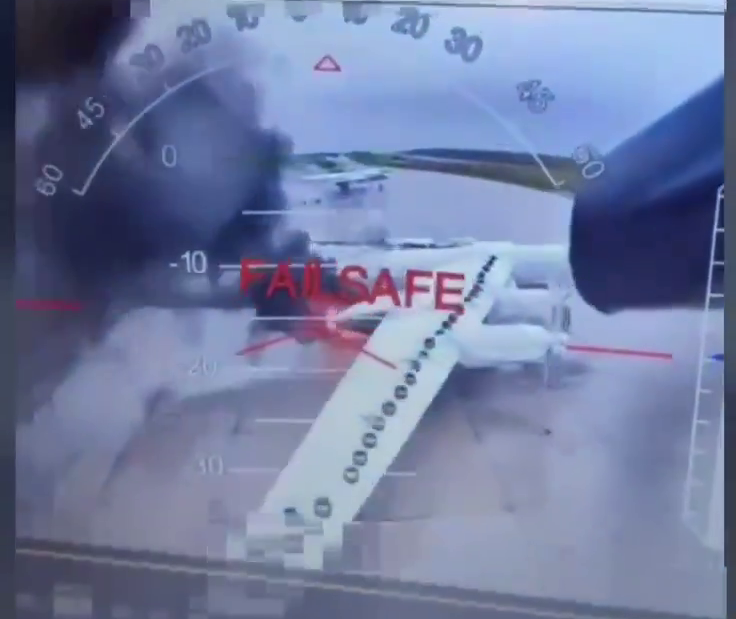Zelensky: Russian Bomber Airfield Attack Shows Ukraine Has “Stronger Tactical Solutions”
Ukrainian President Volodmyr Zelenskyy said at the Vilnius Summit on Monday that the June 1 drone attack on Russian strategic bomber airfields demonstrated that Ukraine had “stronger tactical solutions” than Russia.
In a speech at the summit, Zelenskyy told European leaders in attendance that the success of the attack also demonstrated the impact of financial investments in Ukrainian drone development in a call for greater defense cooperation.
The June 1 “Operation Spiderweb” saw Ukrainian first-person-view suicide drones covertly transported inside wooden cabins transported by truck near Russian Air Force airfields in Irkutsk, Murmansk, Ryazan and Ivanovo Oblasts. The drones conducted a simultaneous attack across three time zones, with the Security Service of Ukraine (SBU) claiming to have hit 34% of Russia’s fleet of strategic bombers used to launch air-launched cruise missiles.
Also on Monday, SBU head Lieutenant General Vasyl Malyuk claimed that the attack struck 41 Russian strategic aircraft, with A-50 airborne early warning and command aircraft hit alongside Tu-95MS, Tu-22M3 and Tu-160 strategic bombers. The full extent of these claims has yet to be independently confirmed.
The day before, Zelenskyy revealed the attack had been planned for over 18 months, claiming that “the ‘office’ of our operation on Russian territory was located directly next to FSB headquarters in one of their regions”. He continued that 117 drones had been used, with all the “people who assisted us” now safe outside Russia.
“It’s genuinely satisfying when something I authorized a year and six months ago comes to fruition and deprives Russians of over forty units of strategic aviation,” said Zelenskyy in his nightly video address. “We will continue this work.”
Following the attack, Russian law enforcement has reportedly stepped up inspections of trucks on roads near Russian military airfields, with Russian users of the Telegram messaging application claiming that the checkpoints and inspections have resulted in traffic jams spanning multiple kilometers.
The Tu-95 and Tu-22M3 have been the mainstay launch platform for Russian nighttime cruise missile attacks on Ukraine, primarily targeting Ukrainian civilian infrastructure and residences. These attacks, however, also involve Russian use of long range suicide drones and ballistic missiles, with the Ukrainian Air Force reporting on Sunday that Russia launched 472 Shahed drones into Ukraine between 7:30PM on Saturday and sunrise on Sunday – the largest Shahed attack of the conflict so far.
Update – 6/4/25:
Ukraine’s intelligence agency, the SBU, has shared a longer video purportedly showing footage from strikes on Russian airfields in Olenya, Ivanovo, Dyagilevo, and Belaya. The footage shows a variety of aircraft, including numerous Tu-95, Tu-22, An-12 and two A-50s (which appear to have been out of service).

